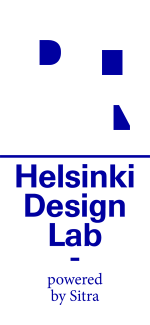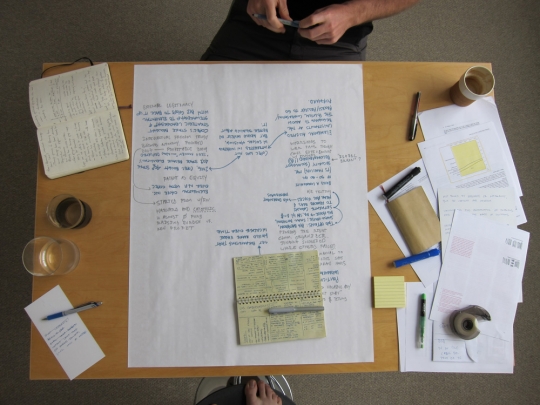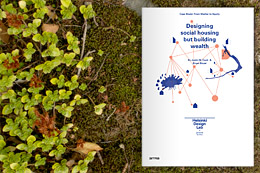One year of HDL development! That went fast: two world tours, countless visits to friends on 5 continents, 3 studio briefings and some heavy logistical lifting. Where we are now (with 6 months to go) is a testament to the hard work of our team and the personal and institutional investment of our partners. Thank you!
But we are just getting started. Our work will become more visible in the coming weeks as we build a greater web presence, publish case studies and host our studios. To this end, Sitra’s Boston office was in full-scale knowledge creation mode this week. With great sadness, Bryan left Helsinki’s epic winter and flew to Boston to join me for the first week of a three week case writing push.
Why dump all that carbon just to write a couple dozen pages?* The short answer is that we needed to build a "bubble." The bubble is a magical space of extreme efficiency, supreme cognition and canny recollection. Once in the bubble, the complex work of creating documents that have real, lasting value is a little easier. With notebooks and the standard array of corporate innovation tools in hand—and the supportive environment of the bubble—we revisited our first three cases to try and better understand what happened in the projects, where design was instrumental, and why they reflect strategic design.
The breadth of the case study project is exciting: from positioning cities as strategic reserves and short cuts to equity, to design as a targeted risk mitigation tool in healthcare environments, to revaluing waste as a resource in a way that can realign the interests of citizens and their government, consumption habits and the environment. Each case provides evidence of how work at a discrete scale can have impact at much larger scales. When the bigger, often highly conflicted fields of play are understood not only as being inextricable from the discrete focus of a project, but also that they themselves are open to adaptive intervention by a skilled design team and supportive client, then the work of strategic design is being done.
The HDL and Low2No projects have necessitated new ways of working for our team. The cases are no exception. Our particular challenge this week was to rebuild the story of the projects both in terms of their chronology, and also the scales at which they operated. In some cases, the scalar question was obvious to those involved in the project, in others, large scale impacts became apparent to us as external, neutral observers. For instance, the redesign of a medical device had a clear impact on surgical pathway efficiency, and thus the hospital’s orthopedic business model (each surgeon could do roughly 3 more knee replacements per week). What was less clear, but equally important is the potential for a more accurate and easier to use medical device to change the way a hospital manages risk.
To help discover new perspectives such as this, Bryan and I "invented" an organized brain dump methodology that attempted to capture key elements of the case according to the 3 main structural components of each case study.
In the coming week, Bryan and I will return to Helsinki for more time in the bubble. We will add depth and formality to our case outlines and prepare them for publishing this month. Meanwhile, the rest of the team is hard at work as our studios and the September event draw near.
*We do buy carbon offsets for our airline travel…



